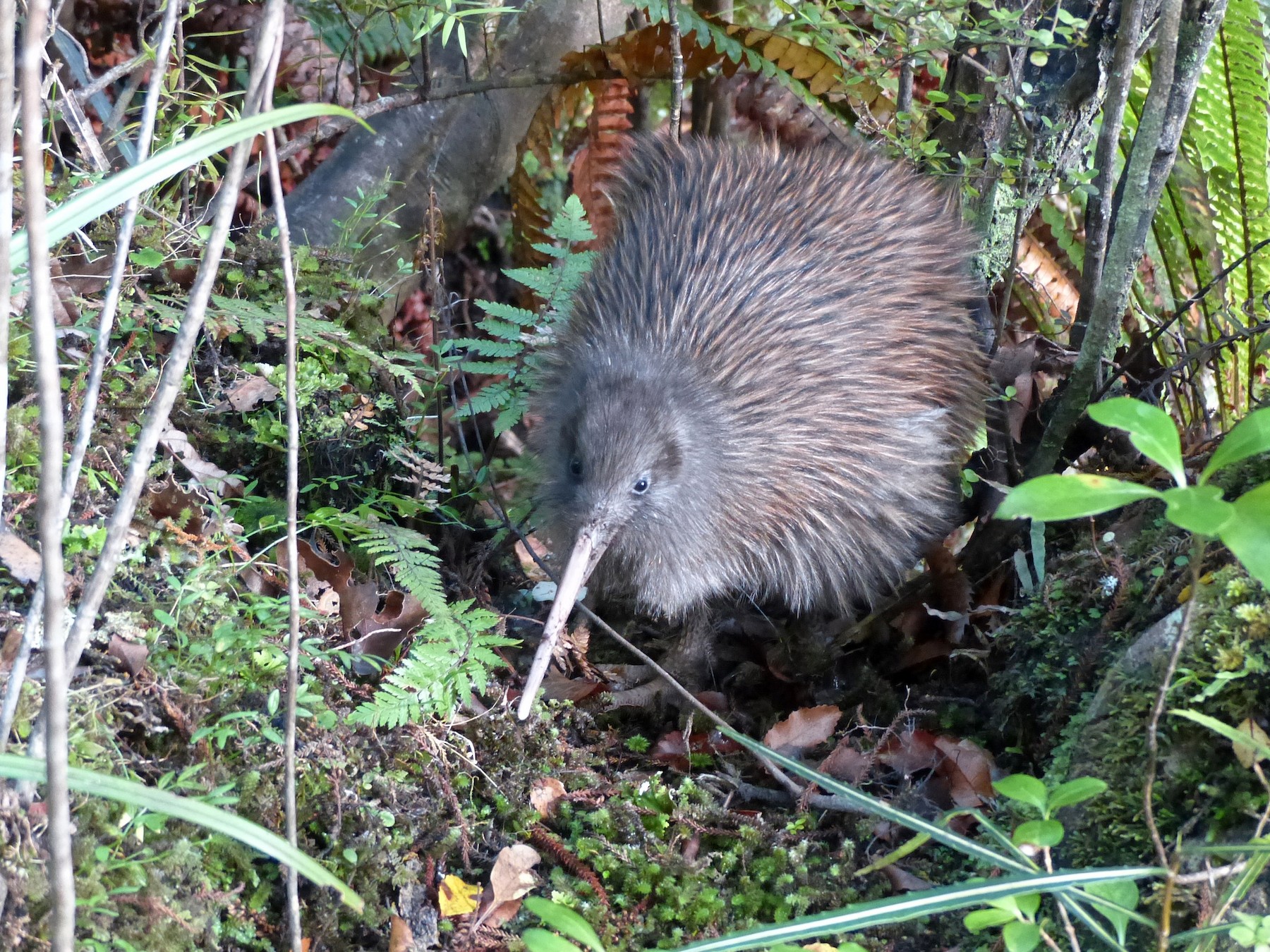Southern Brown Kiwi Bird Details
Apteryx australis
Southern Brown Kiwi
NA
George Kearsley Shaw, 1813
Apterygiformes (KIWIS)
Apterygidae
Apteryx
New Zealand.
Appearance :
The Southern Brown Kiwi is a flightless bird with shaggy, brown feathers, a long slender bill, and stout legs. They have relatively long whiskers around their beaks, which help them locate food.
Behaviour :
Nocturnal and terrestrial, Southern Brown Kiwis are known for their strong sense of smell and probing beak used to find invertebrates in the forest floor.
Habitat :
They inhabit a range of forest types, from coastal to mountain forests, but prefer areas with dense undergrowth where they can forage for food.
Diet :
Primarily carnivorous, their diet consists mainly of insects, worms, and other invertebrates found in the leaf litter.
Conservation Status :
Near Threatened
Distribution :
Found in New Zealand, primarily in the South Island, Stewart Island, and some parts of the North Island.
Population Size :
Around 20,000 to 25,000
Life Span :
Live up to 30 years or more.
Body And Tarsus:
The Southern Brown Kiwi has a compact, round body covered in shaggy, brown feathers that provide excellent camouflage in its forest habitat.
Head And Bill :
It has a small head with a long, slender bill used for probing the forest floor in search of food.
Length :
Approximately 45-55 cm (17-22 inches) in length.
Neck :
The neck is short and not very visible due to the dense plumage.
Size :
Medium-sized for a kiwi, comparable to a chicken in overall size.
Tail Details :
The Southern Brown Kiwi has a short, stubby tail, which is not very noticeable.
Weight :
Between 1.5 to 3.3 kg (3.3 to 7.3 lbs).
Wing :
The wings of the Southern Brown Kiwi are vestigial, reduced to tiny, claw-like structures hidden within its feathers.
Wing Span :
Extremely reduced and not functional for flight.
Facial Feature :
The Southern Brown Kiwi has a distinctive long, slender bill with sensory pits at the tip, which helps it detect prey underground.
Nest Details :
- A burrow or a hollow under dense vegetation, often lined with leaves, grass, or other soft materials.
- Nest made up of: Lined with soft materials like leaves, grass, and feathers.
Breeding Season :
Generally from June to March.
Nesting Season :
During the warmer months of the year.
Egg Color :
Creamy white with a smooth surface.
Egg Length :
Approximately 12-14 cm (4.7-5.5 inches).
Egg Width and Weight :
Approximately 8-9 cm (3.1-3.5 inches).
Clutch Size :
1 or sometimes 2 eggs per clutch.
No. of Broods :
One brood per breeding season.
Incubation Period :
Around 75-85 days.
Nestling Period :
After hatching, around 5-6 weeks.
Vocalization :
They produce a variety of calls, including whistles, trills, and grunts, which are used for communication within their family groups.
Sex Demorphism :
Females are generally larger and heavier than males
Migration Details :
Non-migratory Birds.







